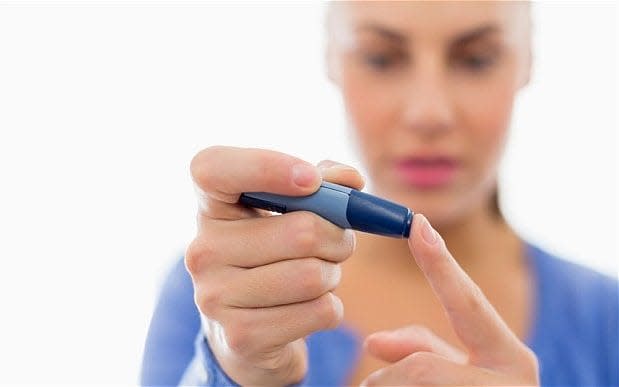Shiver yourself free of diabetes: how turning down the thermostat can help tackle disease

Sitting at home shivering may not seem like a recipe for health and happiness.
But scientists have found that people with Type 2 diabetes can improve their condition simply by turning the heating down.
Most houses in the winter are heated to around 21C but researchers at Maastricht University Medical Centre, in The Netherlands, advise turning the thermostat down to between 15C and 19C for a few hours a day.
When a group of type 2 diabetics were asked to make the change for 10 days, it increased insulin sensitivity by more than 40 per cent, a result comparable with the best medicines that are currently available.
The authors suggest that temperatures in modern buildings, such as homes and offices, should shift between warm and cool through the day in order to support health.
"It has previously been assumed that stable fixed indoor temperatures would satisfy comfort and health in most people,” said Wouter van Marken Lichtenbelt, Professor of Ecological Energetics and Health at Maastricht.
“However, this research indicates that mild cold and variable temperatures may have a positive effect on our health and at the same time are acceptable or even may create pleasure."

In 2014, the same team discovered that cooler home temperatures can help tackle obeisty. Being colder raises the metabolic rate – the speed at which calories are burnt – by 30pc, and shivering can burn around 400 calories an hour as it increases the metabolic rate fivefold.
Often in overheated homes and offices, our bodies do not naturally burn calories to keep warm. It is a trend which has crept up on us over the past century as we have become more adept at controlling the temperature in our surroundings.
In the latest experiment researchers found that although shivering can feel uncomfortable, people quickly adapted to lower temperatures and even started to enjoy the experience, feeling less lethargic and more energised.
Richard Lorch, editor in chief, of Building Research and Information, where the study was published said: “This ground-breaking research provides a new approach to how we think about the heating and cooling our of buildings.
The health benefits from a short exposure to a more varied temperature range will redefine our expectations on thermal comfort. In turn, this will change our practices for heating and cooling our buildings."
In developed countries, buildings account for up to 40 per cent of energy demand and constitute a significant proportion of CO2 emissions so reduction in heating and cooling of buildings would also reduce greenhouse gas emissions.
In March Ashley Grossman Professor of Endocrinology at Oxford suggested that opening your bedroom window at night to allow in a cool breeze could help prevent obesity and Type 2 diabetes. But this is the first study to show it can actually reverse the condition.

 Yahoo News
Yahoo News 
